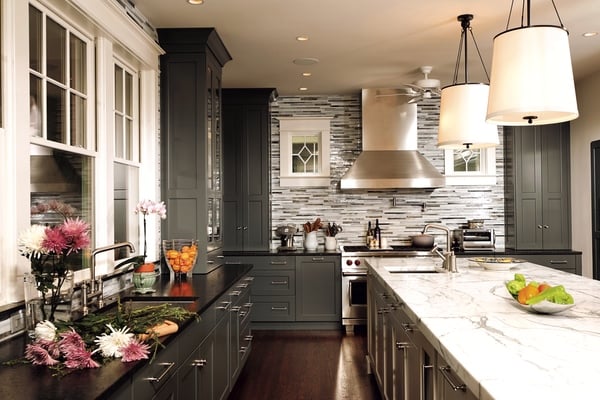Choosing Kitchen Tiles
Installing kitchen floor tiles is a clever way to addsignificant beauty throughout the kitchen. Kitchen wall tiles can inspire anddelight counter and cabinet areas with elegant design statements. ...
Installing kitchen floor tiles is a clever way to addsignificant beauty throughout the kitchen. Kitchen wall tiles can inspire anddelight counter and cabinet areas with elegant design statements. Essentiallyprecise planning when choosing tile types and patterns can make the differencebetween a sensational and fabulous appearance and a distorted one. To make theright choices it is good to explore and stretch the imagination a bit.Concentrate on horizontal and vertical patterns. Also visualize diagonal andpicture frame illustrations. Visualize the types of colours and patterns neededto quote emotion and excitation in order to bring about warmth and enthusiasm.
Kitchen tiles come in many different types and styles. Ceramic, natural stone,glazed, porcelain, granite, marble and even laminate or slate. However, ceramicis the most common term used when discussing kitchen tile types. Most retailand tile supply stores will help during the experimentation and research phaseof tile searching by allowing for a few choice selections of each to help makethe right choice before making a final selection. To help the kitchen tileproject go along smoothly it will be important to measure the length and widthof area to be tiled. Additionally multiplying these measurements together willhelp determine the total square footage of the area to be tiled and will alsohelp ensure the correct number of tiles to be ordered. It is common to allowfor a 2% overage when ordering kitchen tiles. The overage allows room fordamaged and incorrect measurements during installation and ensures that enoughtiles are readily available to complete the kitchen tiling project.
Other materials will include either thin set for flooring tiles and epoxy typeadhesive glue for kitchen wall tiles. However, preference of types ofinstallation adhesives can be discussed during the planning stages. Underlaywonder board or sheet rock is recommended for proper installation of flooringtiles and thin set adheres best to these types of underlay. Underlay alsoenables floor tiles to not crack and break prematurely adding durability andlongevity to the life of kitchen flooring tiles. Epoxy based glues are bestused for wall tiles unless sheet rock has been installed in the areas where thewall tiles are to be installed. Sheet rock and thin set can be used instead ofdry wall and epoxy glue for kitchen wall tiles however, the drywall will needto be uninstalled and sheet rock installed to use thin set for wall tiling.
Related
Types of grouts to use will also be an important factor when choosing differenttypes of kitchen tiles. Some ceramic is porous and latex grouts leave a film onporous ceramic tile. A chemical cleaner is used during the cleaning processafter grouting to remove excess and reduce latex build up on the new tiles.Water based and sanded grouts seem to work best with porous ceramic tiles. Becareful when using sanded grouts on glazed and porcelain tiles to not scratchoff the glazing by applying excessive elbow power. Adding tile can add beautyand warmth to any kitchen tile project bringing elegance, style, and enthusiasmthrough careful selections of different colours, patterns and styles.
Article Tags: Kitchen Wall Tiles, Kitchen Tiles, Kitchen Wall, Wall Tiles, Kitchen Tile, Flooring Tiles, Sheet Rock








0 Response to "Choosing Kitchen Tiles"
Post a Comment